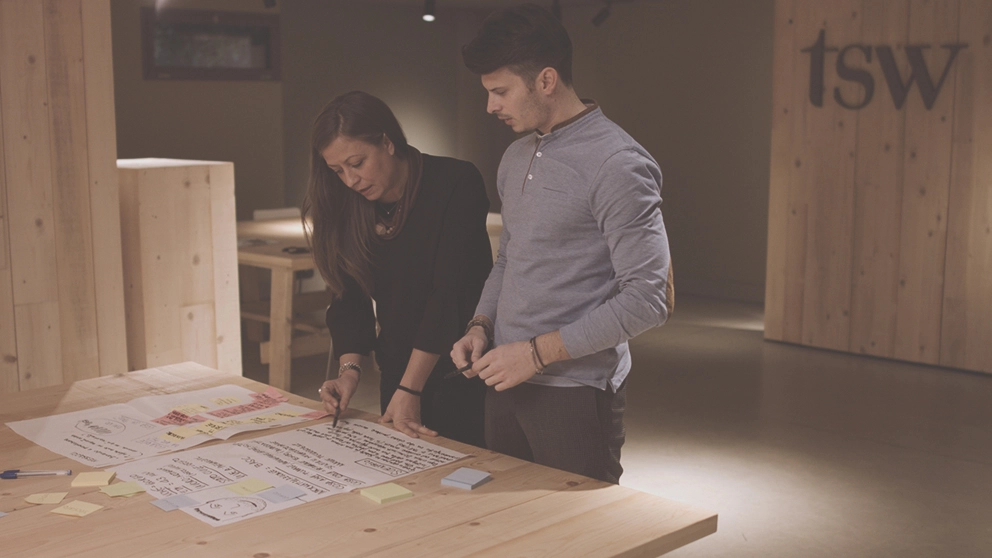Integrating visual perception according to Gestalt theory in co-design: how to listen to people to create visually engaging and inclusive solutions.

Visual perception is a fundamental process that affects our understanding of the world around us. Through our eyes, we receive an enormous amount of visual information that our brain processes, organizes and interprets instantly.
Gestalt theory, developed in the 20th century, has shed light on how we perceive and organize visual stimuli, revealing the importance of connection and the totality of information.
In this article, we will explore how visual perception, understood according to the Gestalt paradigm, can be integrated into co-design, providing an approach based on active listening to people.
Gestalt theory and visual perception
Gestalt theory has radically changed our understanding of visual perception. According to this theory, our brain automatically organizes visual stimuli to form a meaningful whole, rather than perceiving isolated elements.
The basic principles of Gestalt include:
- Proximity principle: objects close to each other tend to be perceived as part of a group or figure.
- Principle of similarity: similar objects tend to be grouped together, creating a visual association.
- Principle of continuity: the mind tends to perceive flowing lines and continuity between objects, even if they are partially obscured or interrupted.
- Principle of closure: the mind tends to complete interrupted or fragmented figures to form complete figures.
- Principle of symmetry: the mind perceives symmetrical objects as coherent units.
These principles reflect our brain’s natural tendency to organize and interpret visual stimuli in an orderly and meaningful way.

Co-design: an approach based on listening to people
Co-design is a methodology that actively involves people in the entire design process, including end users, stakeholders and team members. This approach embraces the idea that those who will use the product or service are essential to creating solutions that are relevant and responsive to their needs.
In fact, co-planning goes beyond the simple involvement of users, placing the emphasis on listening directly to the people involved, trying to understand their needs, motivations and perspectives.
This implies an active and deep listening to the experiences, emotions and challenges of the people involved, in order to create an environment of trust and openness. This practice allows designers to gain valuable insights and build solutions that are truly meaningful and relevant to end users.
Integrating visual perception into co-design: the TSW method
Integrating visual perception, based on Gestalt theory, into co-design can lead to even more incisive and effective design solutions.
Let’s see how these two aspects can interact:
- Understanding users’ visual expectations: Visual perception is influenced by individual and cultural experiences. Through listening, designers can grasp the expectations and visual preferences of users, integrating them into design solutions. This creates a more familiar and comfortable viewing experience for users, fostering a sense of belonging and understanding.
- Create intuitive and engaging designs: Leveraging Gestalt principles, designers can create layouts and designs that intuitively guide users’ eyes through content. This can improve the usability of the product or service, allowing users to find their way around easily and get what they’re looking for naturally.
- Enhance the connection between visuals: By integrating visuals in a cohesive and meaningful way, designers can create an emotional connection with users. This visual coherence can generate a sense of trust and reliability, enhancing the overall perception of the product or service.
- Inclusivity and Diversity: Listening empathically to the people involved in co-design can reveal specific needs of certain groups or individuals. Through the conscious use of visual perception, designers can create solutions that are inclusive and accessible to all, considering the diversity of perspectives and needs.
The integration of visual perception into co-design, together with listening to the people involved, offers an increasingly meaningful approach to design. By combining the principles of Gestalt theory with attention to the expectations and needs of the public, designers can create solutions that are visually engaging and relevant.
Co-planning based on listening makes it possible to embrace the diversity of perspectives and to build inclusive solutions that truly respond to people’s needs. This synergy between visual perception and co-design is the key to more human and meaningful design.